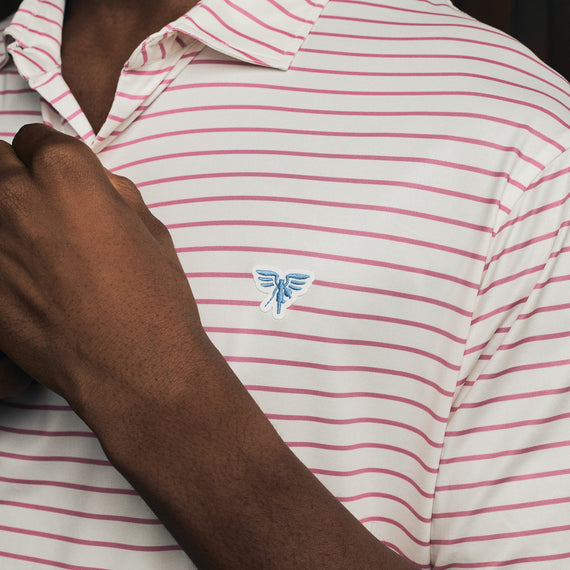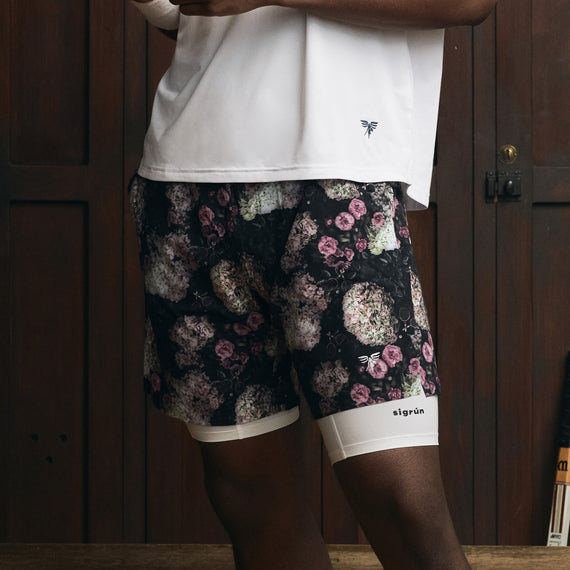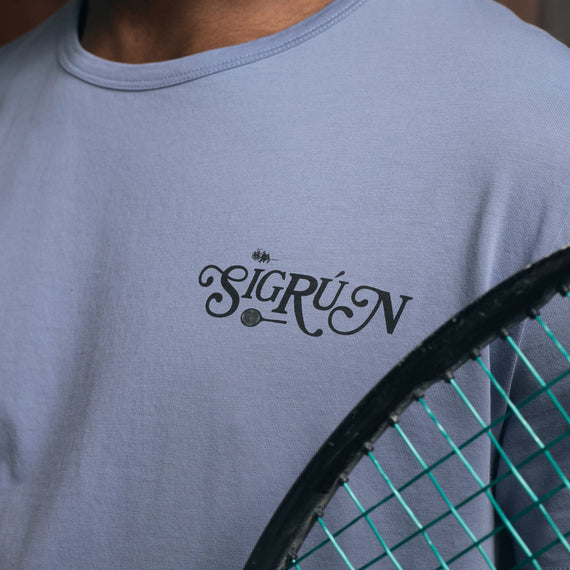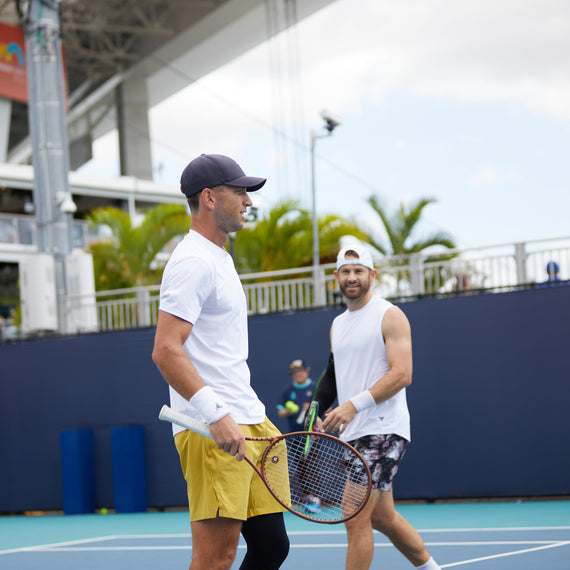Another year, another Earth Day
As we put this together for our annual review, we’ve been reflecting on what we’ve been able to do and what more we can do as a tennis apparel brand. We’re focused on making quality products that people want to wear that will perform and last and are doing that using recycled and more sustainable materials. As of right now, it’s still quite a bit more expensive to use recycled, more sustainable materials, which is part of why we have higher pricing on many of our products. We believe, as the true “cost” of virgin products made from oil becomes more transparent (potentially with a carbon tax and/or credits?), it will become more obvious that quality, more sustainable products are the better and less expensive choice over the long run, and by choosing them now as a customer you are helping to make the transition to more affordable and available sustainable apparel (among other products) faster.
Some of the things we’ve been doing:
- Approaching 90% recycled fibers in our active synthetic materials
- Using responsibly grown natural fibers, such as SUPIMA® cotton, for lifestyle products
- Adding a fabric mill and factory in Portugal, reducing significantly the shipping required across our supply chain to make our lifestyle clothing
- Using anti-odor/microbial applications to garments to reduce laundering needs, energy and water use for consumers while extending garment life
- Continuously evaluating our sustainability footprint across our business (carbon footprint calculators and offsets) and our tennis game, such as using recycled poly strings and grips
- Voting for and pressing politicians for continued progress on environmental issues such as a carbon tax and credits
Since the end of the pandemic, we've felt less momentum for sustainability. We're still working on it, even if people are talking less about it, but we’re a small business and can only do so much. Read on for more on what we’re doing and also, what you can do.

More sustainable fabric content
We’ve been able to transition our use of synthetic fiber content to almost entirely recycled synthetics, meaning less oil, energy and resource use. Since last year, our active lines are now over 85% recycled and for FW23, will be almost 89% recycled, with the difference primarily in spandex (where we are unable to meet very high order volume minimums for recycled spandex). For any new fabric we use, we make sure that it contributes to a more sustainable product portfolio.

For lifestyle, we continue to favor premium, well-grown cottons like SUPIMA® and are looking into using other materials (such as lyocell) that are better and improve quality. There are numerous arguments for and against cotton, so we won’t dwell on it, but in our view, there is (a) a huge ecosystem already established to grow cotton responsibly and (b) it’s a natural fiber that when grown responsibly is generally better than many other natural or synthetic fibers in a lot of ways. It’s not clear to us that many of the more “sustainable” niche fibers (many of which we can’t access anyways because they will only work with larger companies) are sustainable on a global level in a way that could replace cotton while also getting the same quality and feel.
Additionally, we’ve added fabric and garment production in Portugal, reducing by a significant amount the distance American-grown cotton (or European) fibers, fabric and final products travel relative to our current supply chain. Our Portuguese fabric mill is OEKO-TEX® S100 certified and uses 100% renewable energy.
Anti-odor/microbial finishes
We also use premium finishes and applications that improve our products’ longevity and sustainability such as anti-odor/microbial treatments. Anti-odor finishes reduce the need to wash after every use, reducing water and energy use from your laundry (and microplastic leakage) and extending the life of the garment by reducing the wear and tear from laundering. We use ionic+™, Polygiene® and peppermint oil in many of our products where there is not already a natural anti-odor/microbial property. We also make sure our anti-odor treatments themselves are not doing more harm than good. Each of the treatments we use is certified by OEKO-TEX® and bluesign® so if you didn’t sweat or spill on it, wear it again.
What else are we doing?
We continuously review our business for ways we can be more sustainable. One of the things we are looking into is transparency, such as by using a carbon footprint calculator. This continues to be a work in progress for us, since it will likely require outside help and a significant data collection effort across our supply chain. At the end of the day, the biggest change we can make to reduce our footprint is to re-shore production (or at least near-shore it).
We’ve also looked into carbon offsets as a way to offset our carbon footprint but we think it’s early stages still. There’s a ton of work that needs to be done to make sure that the actual money spent on purchasing carbon offsets actually does what it’s supposed to and we’re not confident it’s there yet. That said, we all should plant more trees when we can – who needs a flat roof, metal fence or an unshaded lawn when you can have natural trees, hedges or other plants provide it for you – manicured grass is overrated when it’s not a tennis court (or golf course).
Other ways to make your tennis more sustainable?
Try out a recycled poly string and biodegradable tacky grip and also, recycle your tennis balls. We’re always open to suggestions so hit us up if you have any recommendations!
- We are testing the recently released Luxilon Eco Power (17g) string made from 100% recycled plastic. We haven’t tested it yet but we also came across Velociti Catalyst, a biodegradable string released last December. We’ve been playing with Solinco Tour Bite (16g) at 56lbs in a Wilson Pro Staff for while now. Message us @sigruntennis on Instagram if you want to know how our test went or send us an email.
- Natural gut string (made from organic cow byproduct) is also another option, but we haven’t really ever played with it and the general view seems to be it has less control than poly (but if you’re worried about tension loss, natty gut should hold its tension better).
- Despite it being around for a while, we recently came across EcoGRIP, a biodegradable tacky overgrip from OTZ sports. It plays well (comparable to other tacky grips we’ve tried) and given the sustainability benefits, seems like an easy switch (colors and design are limited though).
- We’ve wrote about it before…but recycle your tennis balls, cans and read about other ways to reduce your tennis footprint. While a little more effort, you can also recycle your strings and grips with companies like TerraCycle.
Continue to press politicians for change
Probably the most important thing you can do is to continue to press your politicians to facilitate change. While businesses have a role to play, it’s unrealistic to expect every business or consumer to drive the change needed when it goes against their interests. Regulation, such as a price on carbon, is a great way to properly align incentivizes for better, greener energy by making carbon intensive energy use more expensive (i.e., the true cost). Educate yourselves on the various alternatives being suggested and promoted to address climate change (The Economist has consistently good write ups on carbon taxes among other solutions in our view).









